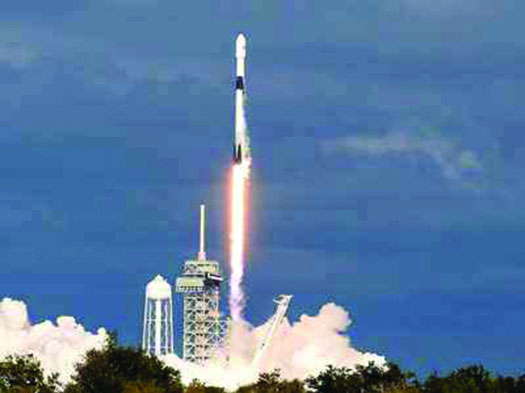Space transport becoming an industrial-scale operation like road transport was back then
It will be a bumper year for big space launches to the Moon, Mars, and asteroids, including many manned flights, but the real shocker is the number of satellites and spaceships being launched by private companies. Never mind Elon Musk’s twelve-thousand-small-satellite Starlink programme, which is already becoming a traffic hazard after only 1,892 satellites have been launched, sixty at a time. (The Chinese have lodged a complaint.) There are 39 other companies in eleven different countries whose vehicles are scheduled to make their maiden flights this year. There’s ‘Blue Whale 1’ from Perigee Aerospace in South Korea, ‘Agnibaan’ from AgniKul Cosmos in India, and ‘RFA One’ from Rocket Factory Augsburg in Germany. Not to mention ‘Hyperbola-2’ from i-Space in China, ‘Eris’ from Gilmour Space Technologies in Australia, and ‘Terran 1’from Relativity Space in the United States. It’s like 1910, when there were hundreds of start-up car manufacturers in the world. Space transport is becoming an industrial-scale operation now like road transport was then, and everybody with an alternative approach that might fly is piling in. For example, ‘Blue Whale 1’ is a two-stage, two-tonne rocket that can put a 50-kg. satellite into a 500-km-high Sun-synchronous orbit. Perigee plans to launch up to forty Blue Whale 1 rockets a year from an Australian site at $2 million each. Agnibaan’s special feature is that its rocket engine is 3D-printed at the company’s site in Chennai. It can deliver a 100-kg. payload to a 700 km. orbit, and the launches will be made from Alaska since India still has limited space at its own commercial launch sites. And on, and on... But the four really heavy lifters are all American, and all are attempting first flights this year. Blue Origin’ is designed to deliver 45 tonnes to LEO, but only the first stage is reusable. ‘Vulcan-Centaur’, mostly for military use, lifts 27 tonnes into LEO and 12 tonnes to a lunar transfer orbit. Space Launch System (SLS), descended from the rocket that carried the Space Shuttle into orbit, is NASA’s own new heavy lifter.
It will ultimately be able to deliver 95 tonnes to LEO and 27 tonnes to a lunar transfer orbit. The star of the show, without a doubt, is Elon Musk’s Starship, whose first flight is still tentatively scheduled for this month. It may well crash and burn - most of his maiden flights do - but that’s the way he works, and he has planned at least a dozen more launches this year. If there are bugs in the newly celebrated marriage of the super-heavy launch vehicle and the passenger- and cargo-carrying Starship proper, he’ll weed them out in the end. This is a real spaceship: room for a hundred people or a thousand cubic metres of cargo space. Both parts are reusable, and the Starship can refuel in orbit. It will land on the Moon, and eventually on Mars. It will be, as Musk said, “a generalized transport mechanism for the greater solar system.” All of these advances will be overshadowed by the various space spectaculars coming up this year: the unfolding of the James Webb telescope, NASA’s ‘Artemis’ mission orbiting the Moon, the joint Russian- European ExoMars mission, Indian, Russian, Japanese and South Korean soft landings on the Moon. But the real news is that after marking time for fifty years, we are actually getting off the planet at last. Cargo to orbit is now affordable (if you’re rich or corporate), and both Earth orbit and the surface of the Moon will begin to accumulate a human population. A thousand people in fifteen years? Mars will take a little longer, probably, but we’re on our way.
(Gwynne Dyer’s new book is ‘The Shortest History of War’. The views expressed are personal.)


























